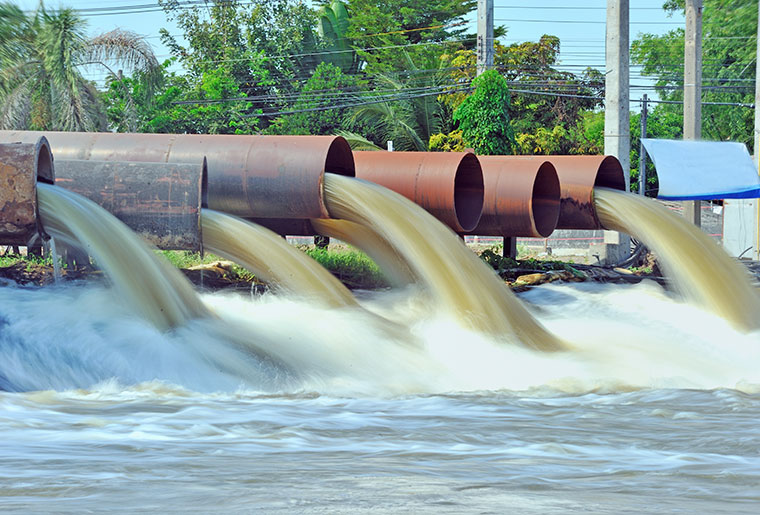Wastewater is generated after the use of fresh water in a variety of applications, and usually involves leaching, flushing, or washing away waste products and nutrients added to the water during these applications. A more detailed definition for wastewater is “Used water from any combination of domestic, industrial, commercial or agricultural activities, surface runoff / storm water, and any sewer inflow or sewer infiltration”.
How Wastewater Treatment Plants Work?
Cities and towns have sewerage systems in place to carry the wastewater from our homes, hotels factories and other establishments to a sewage treatment plant , where the wastewater is treated it is then deemed safe to release into other water sources. The treatment of wastewater goes through different stages. Wastewater is treated to remove the physical chemical and biological contaminants present in it through various processes the pretreatment process involves the sewage being sent through grids or vertical bars that can remove large solid substances like metal cans paper and plastic materials.
In primary treatment process the sewage flows through the grit chamber very slowly so that the sand pebbles and soil settle down at the bottom the sewage flows into the settling tank or sedimentation tank where the solid wastes like feces are allowed to settle down waste such as soaps oils and grease rise to the top of the wastewater the waste material that settles down at the bottom is called the sludge and the floatable material is called the scum. Scum is then removed using a skimmer and sludge is removed with a scraper every few days the water that is left out is called the clarified water.
In the secondary treatment process biological or organic wastes are removed it is a biological process. This is done by transferring the clarified water into an aeration tank where air blowers blow air bubbles which helps the aerobic bacteria to grow and feed on the organic contaminants such as food waste, feces and other organisms. The mixture then flows from the aeration tank into the clarifier where activated sludge settles out by gravity. The activated sludge so produced along with the sludge produced in the primary process is transferred to the digester, where it is decomposed by anaerobic bacteria. Biogas is produced in this process which can be used as fuel or can be used to produce electricity. The activated sludge is then left in the sand drying beds, some quantity of water in the activated sludge evaporates and the remaining quantity drains through the sand beds, this leaves behind the remaining dried sludge which can be used for making fertilizers or compost in the tertiary treatment process.
The leftover wastewater is treated with chlorine to remove the phosphorus compounds, nitrogen compounds and bacteria, it is a chemical process, in which chlorine tablets are added to kill the germs, this process is called chlorination then this water is let off into the water bodies.
How does Hyper Filteration helps among all this, you ask!?

Hyper Filteration deals in all kinds of waste water treatment plants including Zero Liquid Discharge Plant (ZLD).We also deal in Sewage Treatment Plants (STP) Effluent Treatment Plant (ETP), RO Plant, with technology like Membrane bioreactor (MBR).We also provide customized solutions for Mineral Water Plant.
Contact us today for your queries and our solutions.

